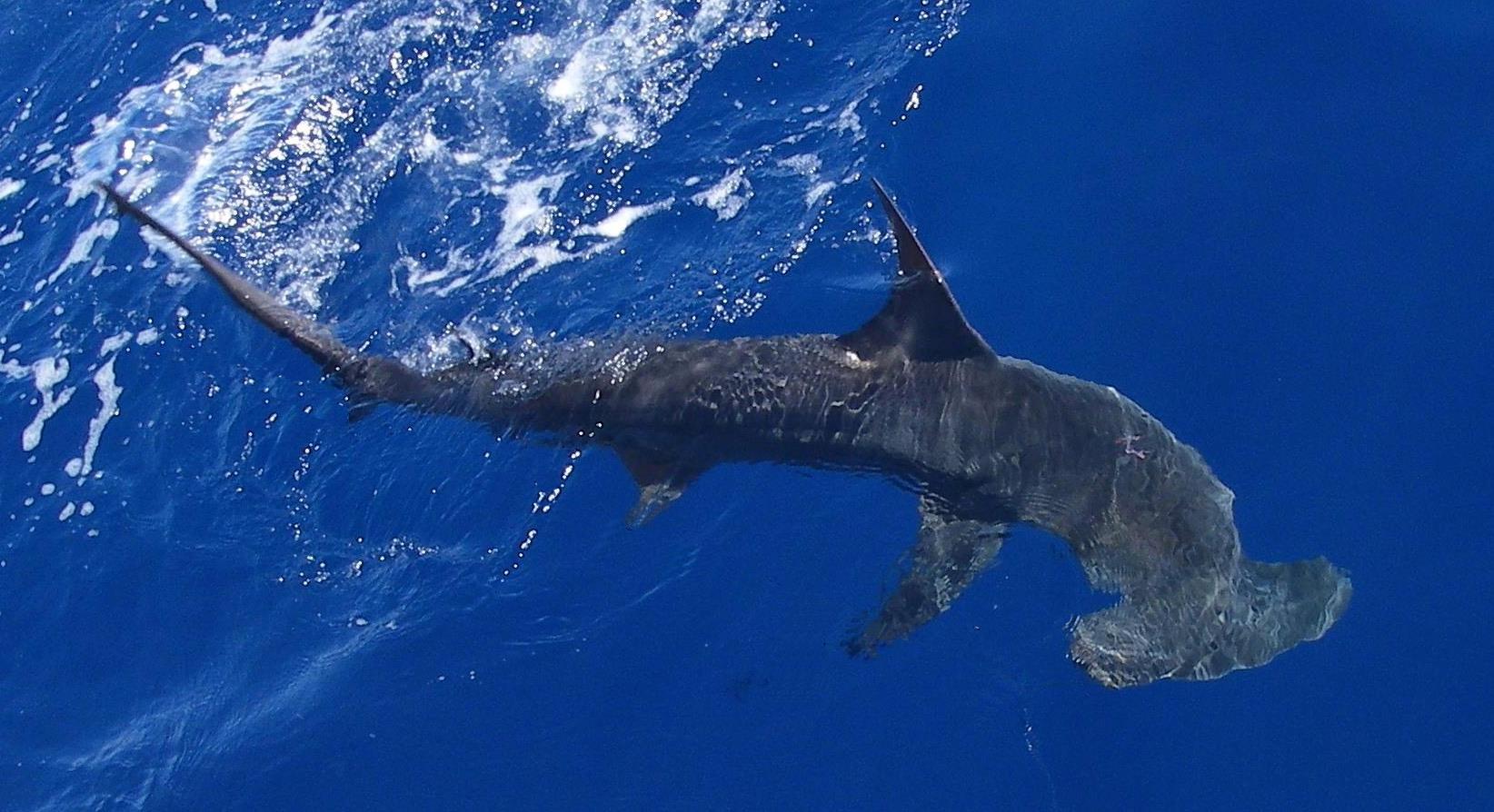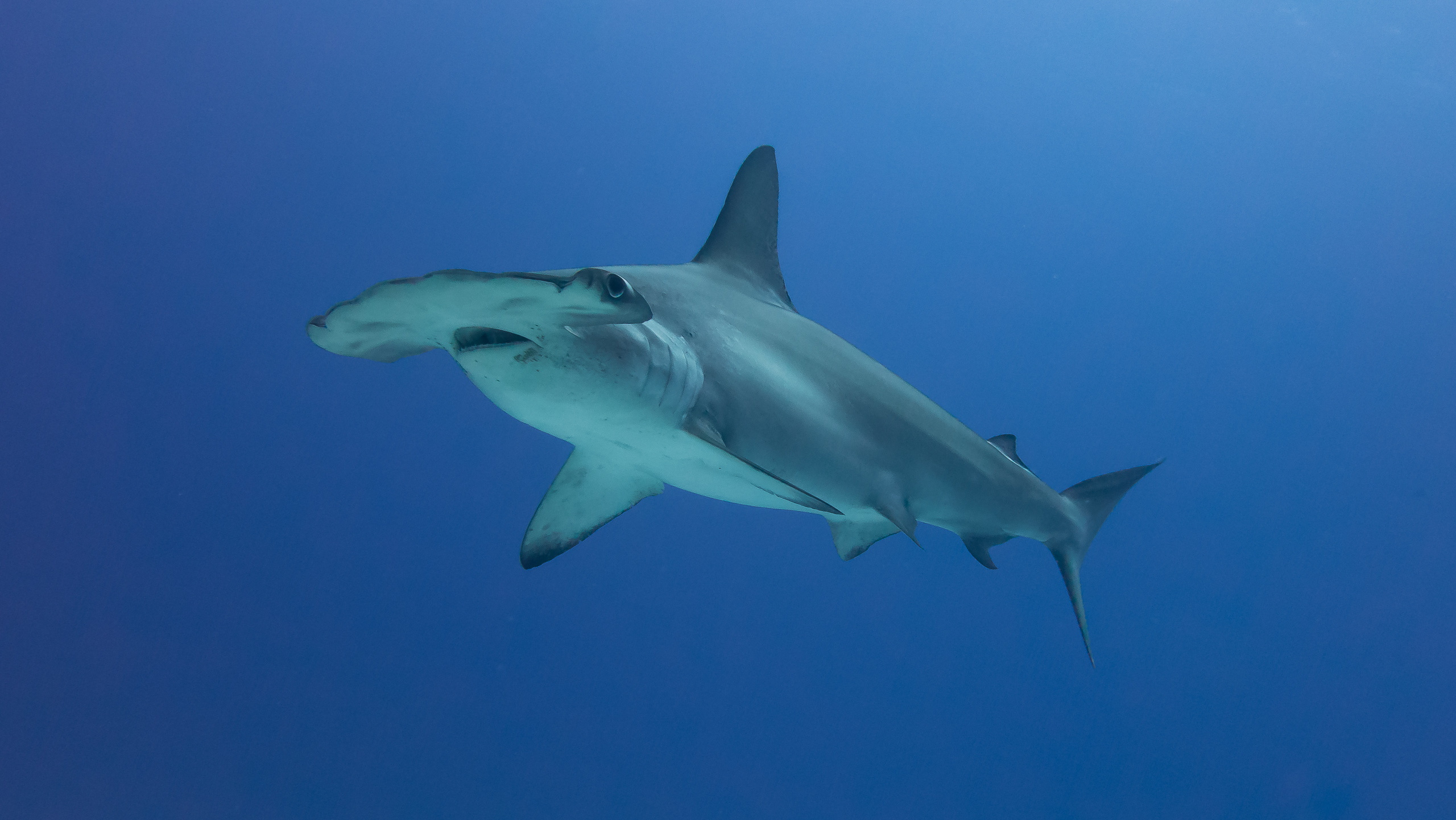The Scalloped Hammerhead was always the most common Hammerhead Shark around. Yet thanks to overfishing and shark finning practices this species is now since 2008 on the “globally endangered” species list. In parts of the Atlantic Ocean, their populations have declined by over 95% in the past 30 years. Hammerheads are among the most commonly caught sharks for finning.
Latin name Sphyrna lewini
Maximum size in cm 420
Colour Olive-brown with charcoal fin tips
Found where All levels, inshore, far offshore
Other names Bronze hammerhead, Kidney-headed shark, Southern Hammerhead
Status (IUCN) Critically Endangered
Diet Sardines, mackerel, herring, squid, octopus
Pelagic shark
The Scalloped Hammerhead is a coastal pelagic species and is found over continental and insular shelves and in nearby deeper water. It can be found down to depths over 500 m (1,600 ft), but is most often found above 25 m (82 ft). It lives mostly in warm temperate and tropical waters, where it uses the shore as a breeding ground. The most distinguishing characteristic of this shark, as in all Hammerheads, is the ‘hammer’ on its head. The shark’s eyes and nostrils are at the tips of the extensions. This is a fairly large hammerhead, though is smaller than both the great and smooth hammerheads.
High metabolic rate
The Scalloped Hammerhead has a very high metabolic rate, they need a lot of food, or they will starve. This shark feeds primarily on fish such as sardines, mackerel, and herring, and occasionally on squid and octopus. Larger specimens may also feed on smaller species of shark such as the blacktip reef shark. During the day, they are more often found close to shore, and at night, they hunt further offshore. Adults are found alone, in pairs, or in small schools, while young sharks occur in larger schools.
These sharks are often seen during the night,day, and morning in big schools, sometimes numbering hundreds, most likely because large groups can obtain food easier than singles or small groups, especially larger and trickier prey, as commonly seen. The younger the sharks, the closer to the surface they tend to be, while the adults are found much deeper in the ocean. The Scalloped Hammerhead uses deep water to survive as safety and feeding. They move in the night and use the environment as a map, similar to a human reading a topographical map.
Although large sharks, the Scalloped Hammerheads are not aggressive, and not considered dangerous and are normally not aggressive towards humans. Yet they are often mistaken for attacking people. Scientists studying them found that these sharks are not aggressive.


